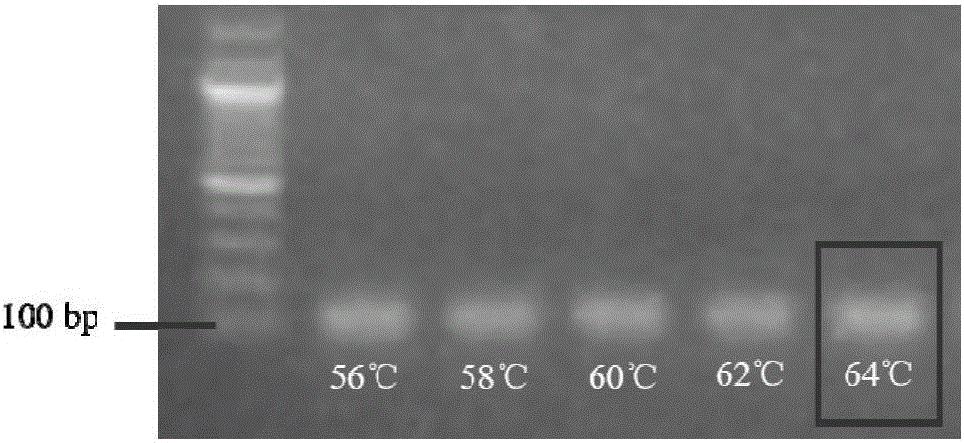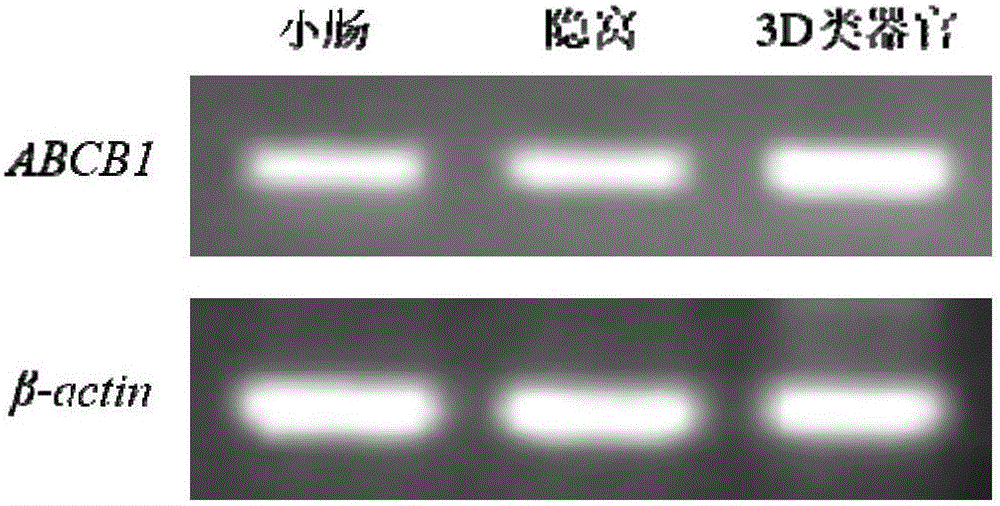Method for building P-glycoprotein research models based on human small intestine 3D (three-dimensional) organoid and application of P-glycoprotein research models based on human small intestine 3D organoid
An organoid, small intestine technology, applied in artificial cell constructs, biochemical equipment and methods, gastrointestinal cells, etc., can solve the problems of large differences in real conditions, high-throughput screening of unfavorable drugs, and cumbersome operations, and achieve the cultivation cycle. The effect of short time, saving manpower and material resources, and low economic cost
- Summary
- Abstract
- Description
- Claims
- Application Information
AI Technical Summary
Problems solved by technology
Method used
Image
Examples
Embodiment 1
[0050] Example 1 Human Small Intestine 3D Organoid Culture
[0051] (1) Suspend human small intestinal crypts containing small intestinal stem cells, Paneth cells, small intestinal epithelial cells and other cell types in Matrigel, with a density of 5-10 complete crypts per 1 μL.
[0052] (2) Add an appropriate volume of the above Matrigel to a preheated 96-well plate (5 μL) or 24-well plate (50 μL), and place in a 37° C. incubator for 15 minutes to allow the Matrigel to solidify.
[0053] (3) After Matrigel is solidified, add corresponding volume (100 μL for 96-well plate, 500 μL for 24-well plate) containing various growth factors (Recombinant Human R-Spondin-1, Recombinant Murine Noggin, Recombinant Mouse Epidermal Growth Factor (EGF), Recombinant Mouse Wnt-3a) ADMEM / F12 medium, and then place it in a 37°C incubator for cultivation. The medium was changed every two days.
Embodiment 2
[0054] Example 2 Morphological observation of human small intestine 3D organoids
[0055] The 3D organoids cultured for 0, 1, 2, 3, 4, 5, and 6 days were observed and photographed under an OlympusIX 71 microscope equipped with an Olympus DP 71 camera system. The results are as follows figure 1 shown. It can be seen from the figure that with the increase of culture days, the volume of crypts gradually increased and organoid structures were formed. When the volume of organoids increases to a certain extent, the stem cells in the crypts begin to differentiate to form new crypts, which is manifested as a "budding" phenomenon.
Embodiment 3
[0056] Example 3 Detection of P-gp protein expression at the mRNA level in human small intestine 3D organoids
[0057] (1) Acquisition of 3D organoids: After 2 days of culturing 3D organoids (in a 24-well plate) according to the culture method in Example 1, take them out from the cell culture incubator, discard the medium, and wash twice with PBS Add 1 mL of pre-cooled PBS to each well, gently blow off the matrigel, transfer to a 15 mL centrifuge tube, and centrifuge at 200×g for 5 min at room temperature. The precipitate is 3D organoids. Discard the supernatant and set aside.
[0058] (2) Acquisition of mRNA: 500 μL Trizol was added to each tube containing small intestine tissue, sorted crypts and 3D organoids, and total mRNA was extracted according to standard procedures. (Among them, the human small intestine tissue has been homogenized)
[0059] (3) Acquisition of cDNA: The extracted total mRNA was used as a template (1000 ng of template), reversed into cDNA under the act...
PUM
| Property | Measurement | Unit |
|---|---|---|
| Thickness | aaaaa | aaaaa |
Abstract
Description
Claims
Application Information
 Login to View More
Login to View More - R&D
- Intellectual Property
- Life Sciences
- Materials
- Tech Scout
- Unparalleled Data Quality
- Higher Quality Content
- 60% Fewer Hallucinations
Browse by: Latest US Patents, China's latest patents, Technical Efficacy Thesaurus, Application Domain, Technology Topic, Popular Technical Reports.
© 2025 PatSnap. All rights reserved.Legal|Privacy policy|Modern Slavery Act Transparency Statement|Sitemap|About US| Contact US: help@patsnap.com



